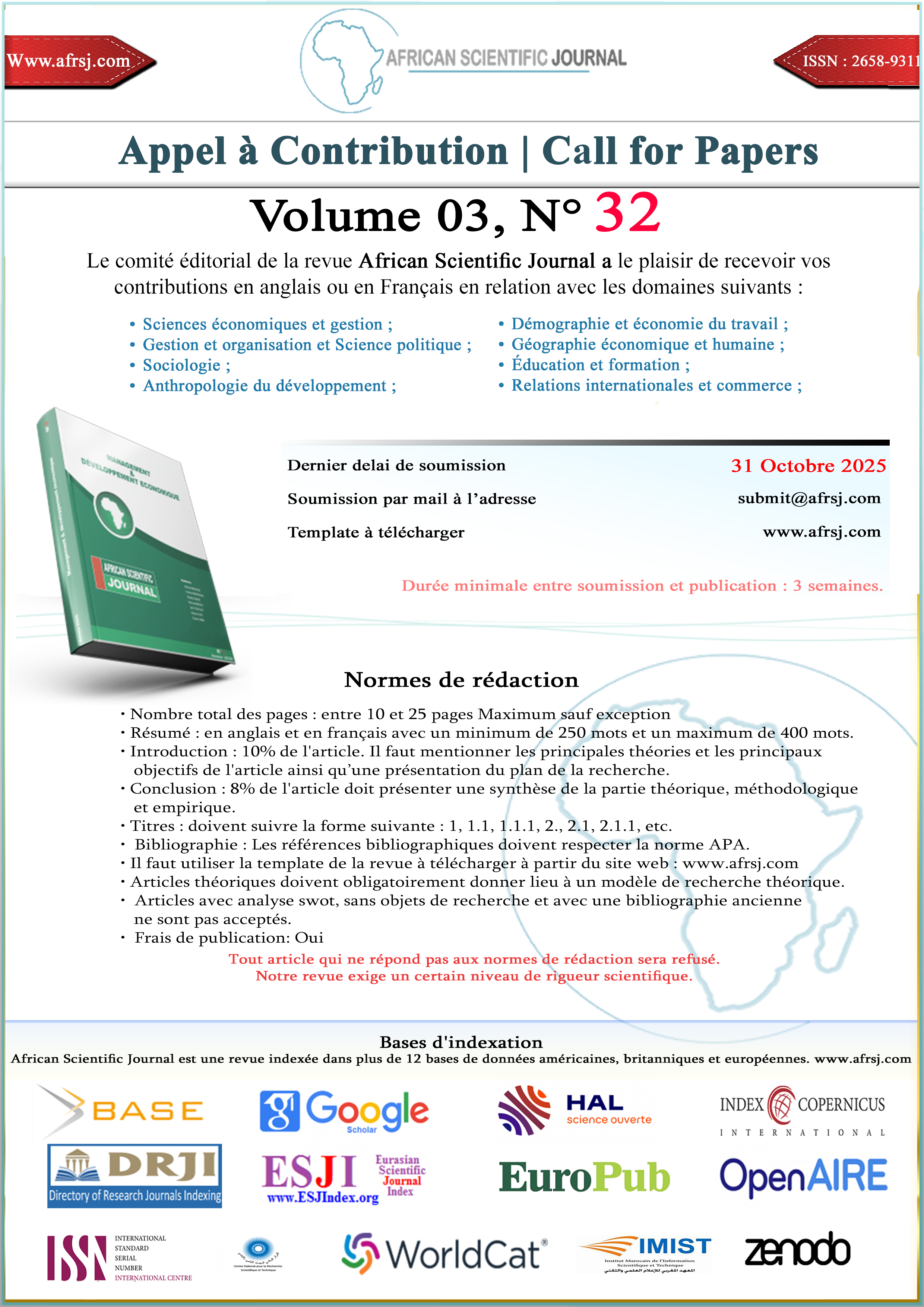Determinants of Child Labour in Senegal: an analysis using the Double Hurdle model
DOI:
https://doi.org/10.5281/zenodo.7756882Keywords:
Farm Households, Child labor, intensity of use, Double Hurdle model, SenegalAbstract
Child labor, especially in developing countries, is a complex phenomenon and depends on several factors. Thus, for better management, the identification of the factors determining its use and intensity must be well analyzed. This paper goes beyond the use of children on farms by considering its intensity of use with the Double Hurdle (DH) model. The data used are for 779 rural households and come from the survey conducted by DAPSA (2018-2019) in the Anambé and Senegal River zones. Our results show that gender, number of hours worked by women, age of the household head, have a plot in the public agricultural development board, and living environment explain the decision to involve children in agricultural work. The second model shows that the number of hours worked by men, age squared, polygamous marriage, size of livestock, living environment, and subscription to agricultural insurance significantly affect the intensity of use of children in agricultural work. From a policy perspective, this paper contributes to the debate on the various interventions to combat child labor on farms in Senegal.
Downloads
Published
How to Cite
Issue
Section
License
Copyright (c) 2023 African Scientific Journal

This work is licensed under a Creative Commons Attribution-NonCommercial-NoDerivatives 4.0 International License.





















